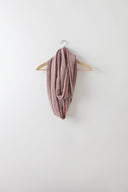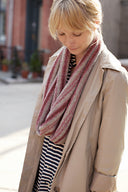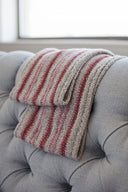Ticking Cowl
Pattern Specs
CONSTRUCTION
- Cowl is worked circularly from bottom ribbing towards top ribbing.
GAUGE
- 22 stitches and 36 rounds = 4″ in circular stockinette stitch with Size A needle; measurement taken from relaxed fabric after blocking with very slight stretch
NEEDLES
Size A needle:
- One 32″ circular in size needed to obtain gauge listed
- Suggested Size: 4 mm (US 6)
FINISHED DIMENSIONS
- 80″ circumference, 8″ height; measurements taken from relaxed fabric after blocking
Pattern Materials
YARDAGE
Fingering weight wool yarn in the following approximate amounts:
- Color 1: Approximately 430 yards
- Color 2: Approximately 150 yards
- Color 3: Approximately 50 yards
YARN
Brooklyn Tweed Loft (100% American Targhee-Columbia Wool; 275 yards/50g)
- 2 skeins of Color 1
- 1 skein each of Color 2 and Color 3
- Photographed in colors Woodsmoke (Color 1), Camper (Color 2), and Wool Socks (Color 3)
Techniques
Errata
14 September 2012: Version 3.0
The first flat purl round (before joining work into the round) was removed. The pattern now joins into the round directly after the cast-on row, and three rounds are then knit. This change was made so that the rolled edge at the beginning and end of cowl is identical in appearance.
27 July 2012: Version 2.0
The cast-on number for the cowl was listed incorrectly; it has been changed to 400 instead of 358.
The stitch gauge was also changed to 20 stitches = 4” rather than the 22 stitches previously listed.
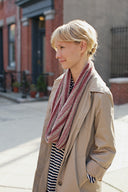
Ticking Cowl
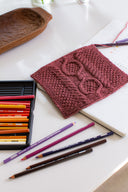
Uncompromising Excellence in Every Detail

